internet in paradise
Internet in Paradise
17.06.06
Huahine, French Polynesia
Huahine, one of the many grouped islands in French Polynesia. Our plans for future ocean voyaging could have ended here, because we almost crashed onto a reef.
Because we always time our arrival with the morning sun, I(Rek) always get the first look of every island. Huahine stood in front of us, a series of volcanic peaks marked by deep valleys and blanketed in green, an island that came into being millions of years ago.
We were heading for Baie d'Avea, to the south of the island.
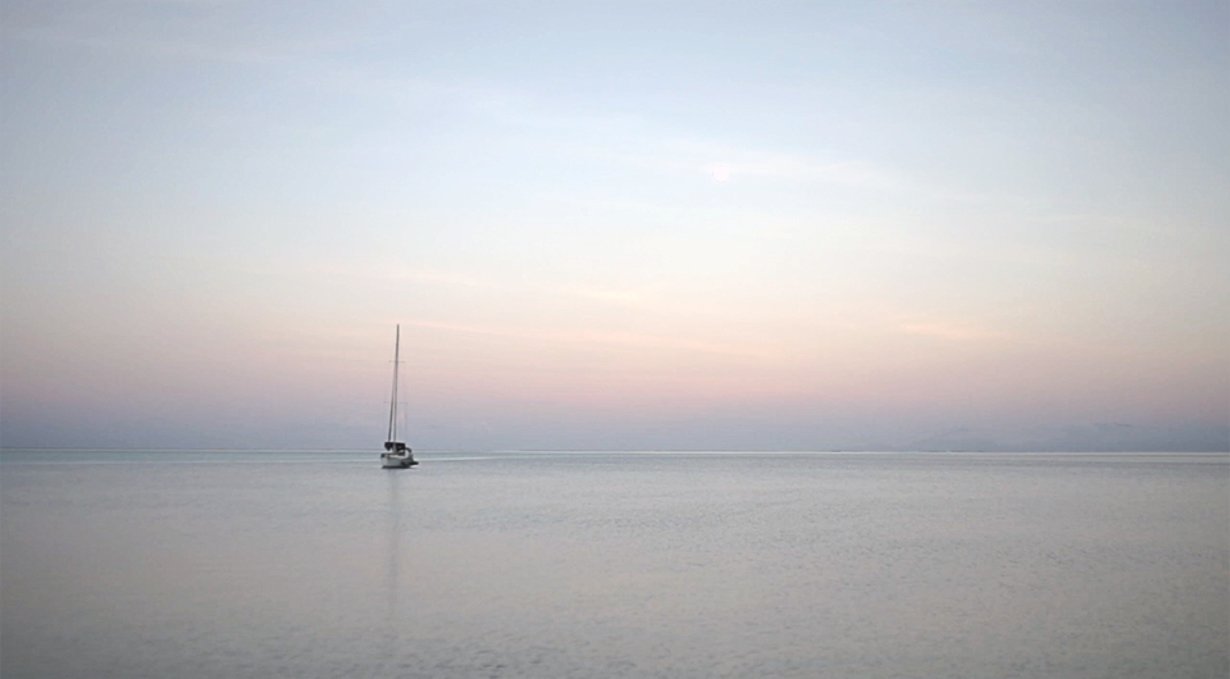
I'd picked this place, because we'd heard the internet was good — yes, we make decisions based on this a lot. I was worried though, because the bay appeared to be very open to swell. From accounts I'd read online, people said that it was a very protected bay, but it didn't look that way on the navigation app Navionics. I thought we'd go and see for ourselves. I looked at images of the island online beforehand, but some important details had slipped my mind...
Whenever we are near land, we slow down and scan the horizon with our binoculars to get a look at the entrance. On Navionics, I saw that there was a dotted line around the island, but that's not how this app typically marks reefs or shallows on charts.
Something wasn't right.
Devine looked through the binoculars more carefully, trying to see the state of the water ahead between swells. The waves were curling and crashing onto something, and the water was getting shallower, and shallower. It was a reef. We made a hard turn to port, running parallel to it. We had some distance between it and us, but it wasn't far...
Evidently, there was no pass to Baie d'Avea on the south west side of the island.
Why did this happen? We had sonar mode on. In sonar chart mode on Navionics, shallows are not marked by a big patch of blue or green, but by a thin dotted line. I assumed that the light blue patch was a reef, but that the lighter white part west of the channel markers was indicative of a pass. In the image below on the left, is the sonarchart (that we had on at the time), and the other is the regular chart view. Usually, sonar offers more precision in maps and it's why we use it. We've learned our lesson. In hindsight, we should have read more about the island rather than to rely completely on our nav app, especially after reading this article by another boat reporting the same problem with sonar charts.
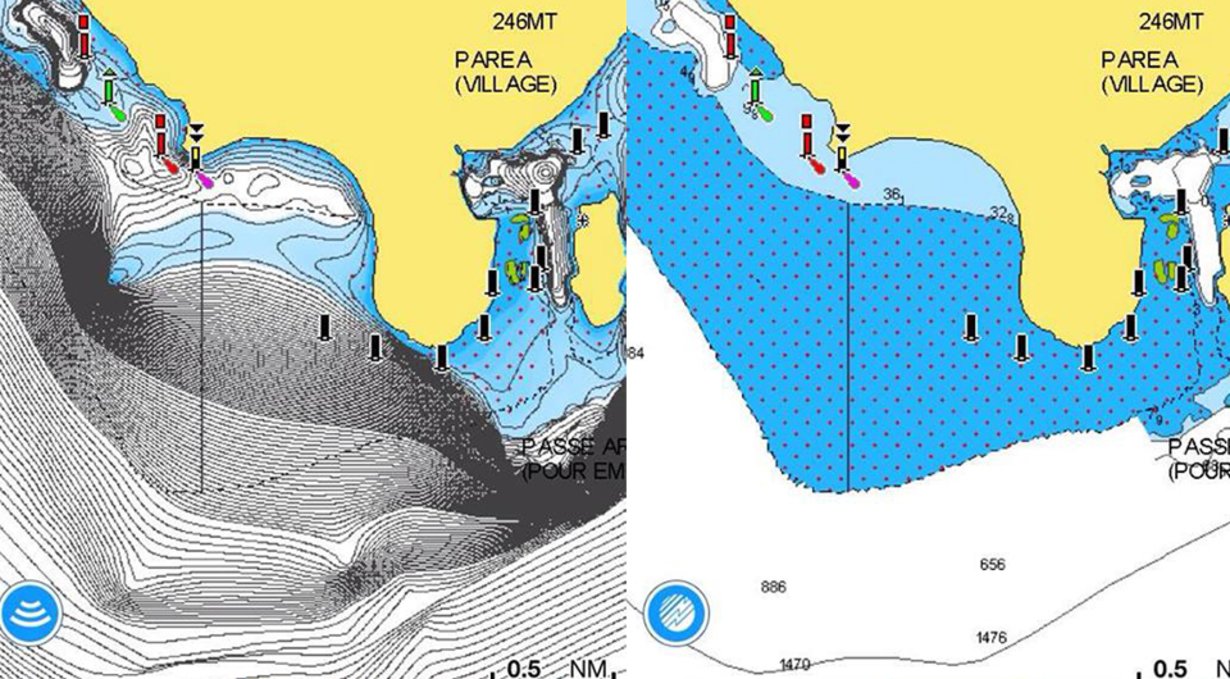
Devine and I couldn't believe it. We were shocked, but glad that we always plan our entrances in the full light of day, and that we trusted our ears and eyes more than the app. We learned later that many boats crash onto this reef, happy to say that Pino was not one of them. There were boats anchored in the bay, we wondered then if they'd seen us pointing toward the reef hoping Huahine wouldn't claim another yacht.
I looked at the chart again—making sure sonar was off this time—to try and see how we could go to Baie D'Avea, without having to jump a reef to get to it.
To go to Avea Bay, we had to sail north to get in through the pass, then sail down to the south from inside the reef.
Arriving in the north, we could see the small village of Fare, this is where we would have to go to get groceries. The village bordered the water, a large concrete pier covered the downtown side, a big ship was tied to it with people busy lifting cargo from its deck. This part of the island was relatively flat, lacking in peaks. We moved past it, and began to motor southward toward our anchorage.
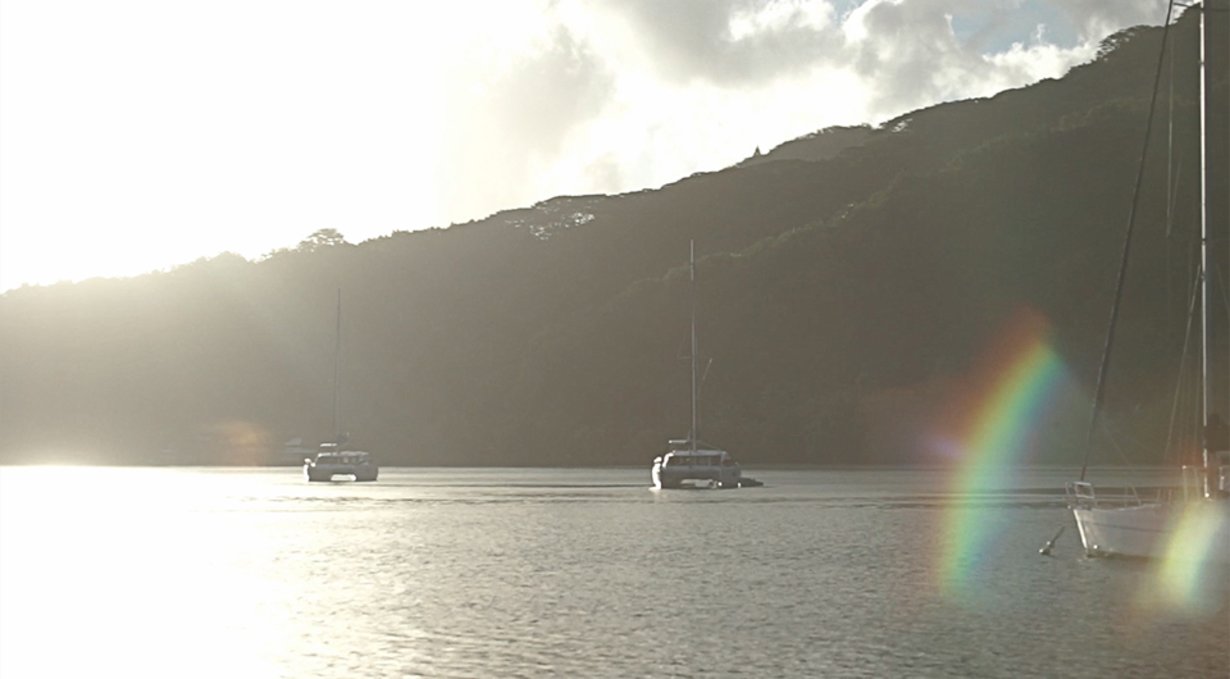
The pass was long and winding, often shallow, I'd stand at the bow to look at the passing coral heads below. The land was hilly and lush. A small road ran along the water, we could see cars coming in and out of view, few cars—this island was small. Some of the shore was lined with rows of pillared-huts, a resort for tourists consisting of little bungalows with thatched roofs.
We arrived a short hour later into Baie d'Avea, there were few boats here. The bay had moorings. These we'd read, were free. In fact, all moorings on the island were free for anyone to take. We dropped our anchor in 10 m of water, right within range of the hotel WiFi—perfect.
We put Iggy in the water and went over to a pier in front of the hotel. As we neared it, the seafloor rose beneath us and with it blocks of coral and anemones. The water had a healthy population of fish.
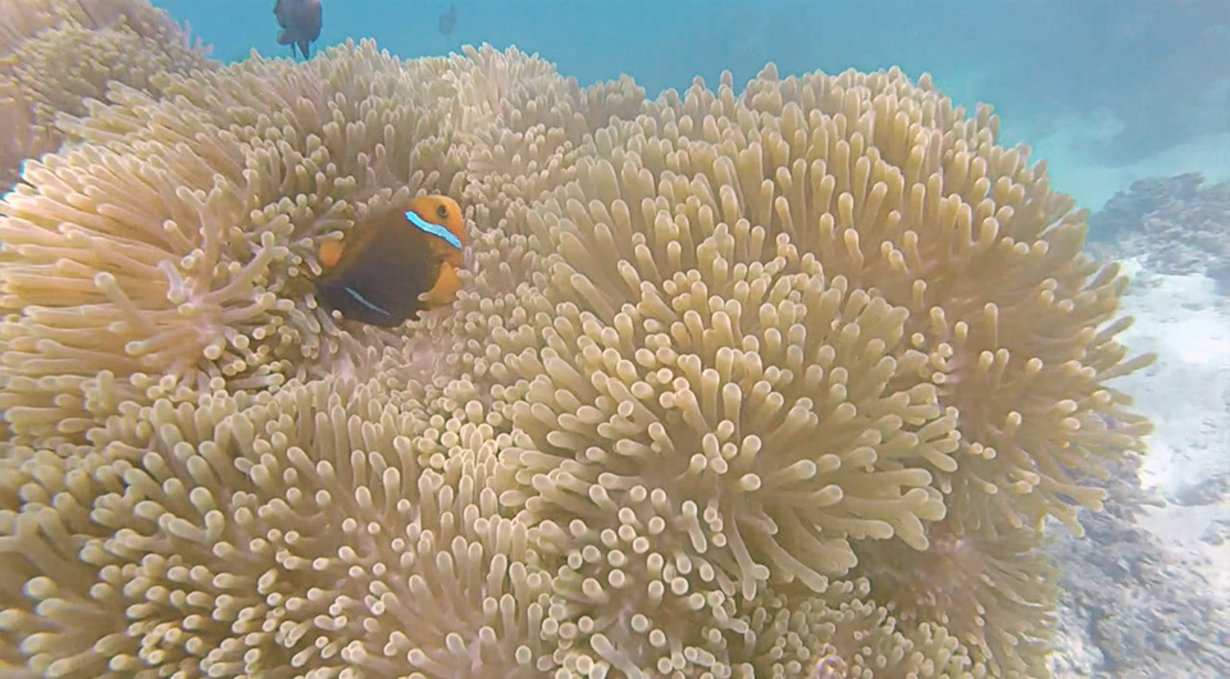
The famous clown fish remained in the safety of the anemones. Picasso triggerfish hovered near, their faces intricately-painted. The yellow moorish idols poked at the coral and sponges with their tubular noses, their head spines dramatically elongated to form a trailing sickle-shaped crest. We couldn't wait to get into the water, to go and see them all up close!
The pier looked new, beautifully constructed, a higher part acted as a walkway to a scenic viewpoint for tourists. A set of stairs lead to a lower part of the pier, where boats could moor their dinghies. At times, this part of the pier was near-submerged. It had shiny new cleats, and the wood was immaculate.
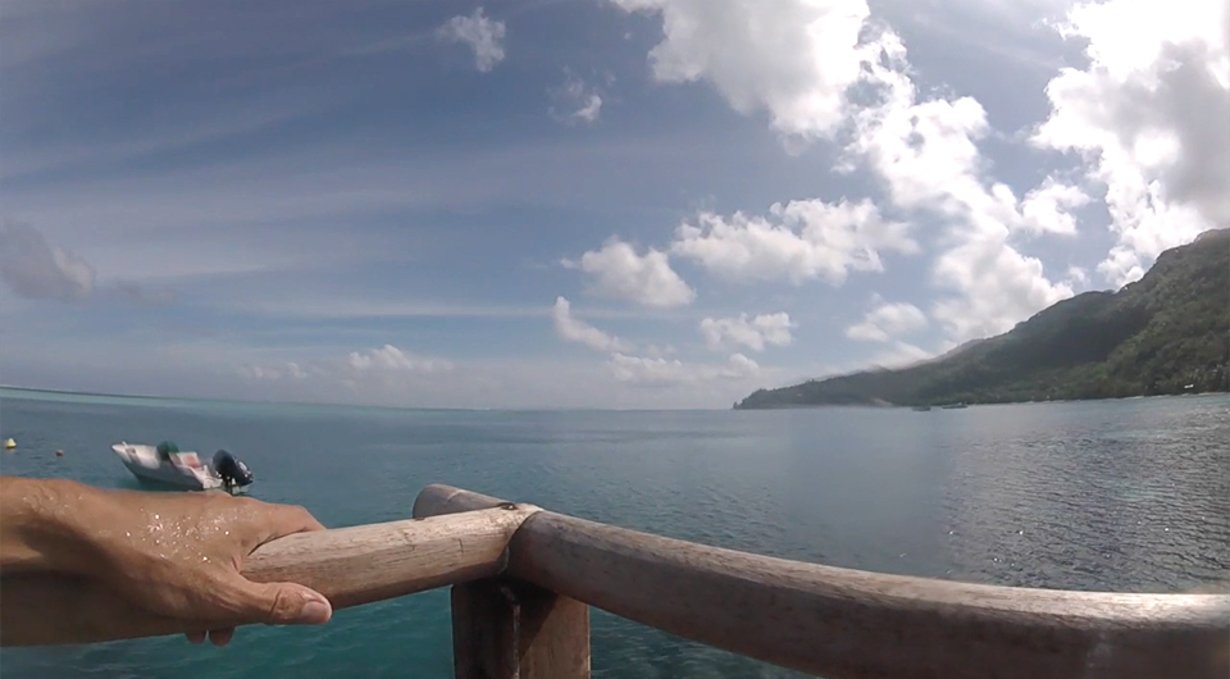
We tied Iggy to the low pier and stepped ashore, this pier belongs to the hotel but unlike some other places we were not asked to pay them a fee to tie to it. Another great thing about it, was the presence of a fresh-water shower on the shore annexed to the pier so beach-goers could rinse the salt and sand off after a swim. We made use of it, keeping the fresh water from our tanks for drinking and dishes instead.
Baie d'Avea, and the whole of Huahine isn't completely overrun by tourists. Despite the presence of a resort, the place remains low-key. The resort doesn't claim ownership of the beach front, the locals, sailors and tourists can all come and make use of the pier, the showers and the sandy beach.
We found the password to the wifi with ease, they made no attempt to conceal it and didn't seem to care if we were guests of the hotel or not.
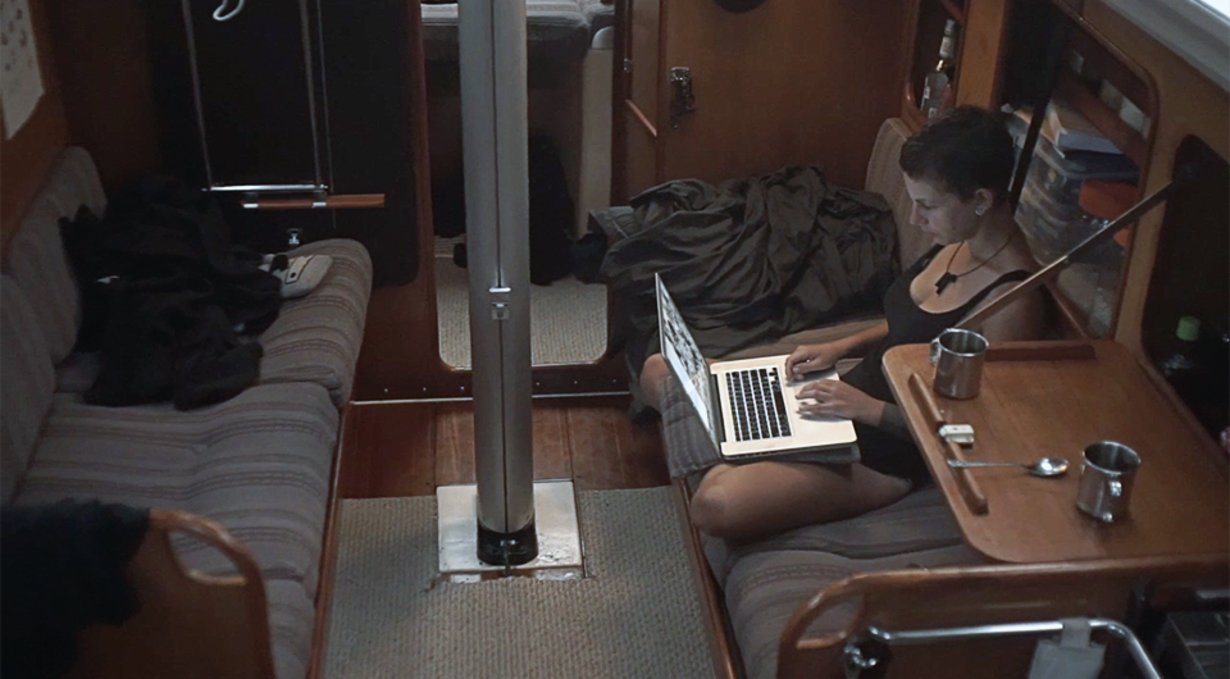
For the rest of the month, we had WiFi from the boat—what a nice change! Everywhere else we'd been so far, we had to take our laptops ashore to get a signal, and this often meant having to pay to sit in a noisy bar, or cafe to upload a video, send out a few tweets or download an important file. We don't mind paying for a drink, but if we need to upload a video we have to be there for hours at a time, with no way to charge our laptops. Restaurants, bars and care rarely provide this service, and will often refuse use of their outlets. We understand why, but it makes things a bit difficult for us at times. Uploading anything then becomes a 3-day endeavour, sitting outside, while mosquitoes make a meal of our flesh.
Now, we get to stay on Pino to do these tasks, and we can spend our visits ashore taking walks and swimming rather than turning it into computer time. On occasion though, as the wind shifts to the south, Pino would get pushed just out of wifi range. We laughed at this, checking the weather for the next day to see if we could have wifi on the boat or not.
Our wifi is wind dependent.
WOOSH! Pino swings to the south. 5 bars.
WOOSH! Pino swings back to the north. 2 bars – damn!
I was able to update my Ipad, to get an app that would permit me to use it as a drawing station. We also uploaded videos! Yep, the connection was that good!
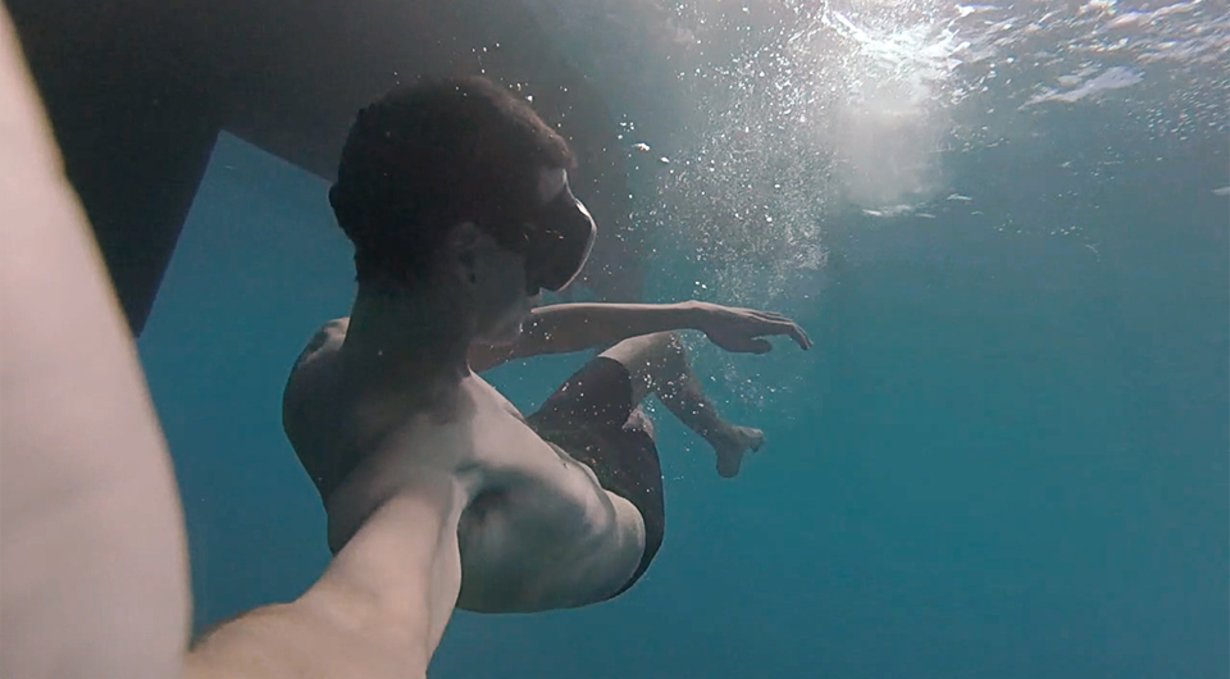
Internet aside, this turned out to be our favorite anchorage in Polynesia. The water was clear and calm, there was little noise or traffic. We spent a lot of time in the water, floating on the surface and facing down, looking at the stingrays gliding in the depths. They moved effortlessly, their pectoral fins undulating and propelling them forward.
Everytime we thought we saw a turtle, we'd scream it aloud so the other would hear.
It was almost never a turtle.
Turtle heads poking out of the water resemble coconut shells. We're confident though, that at least one of those coconut shells was a turtle, coconut shells typically don't submerge at will.
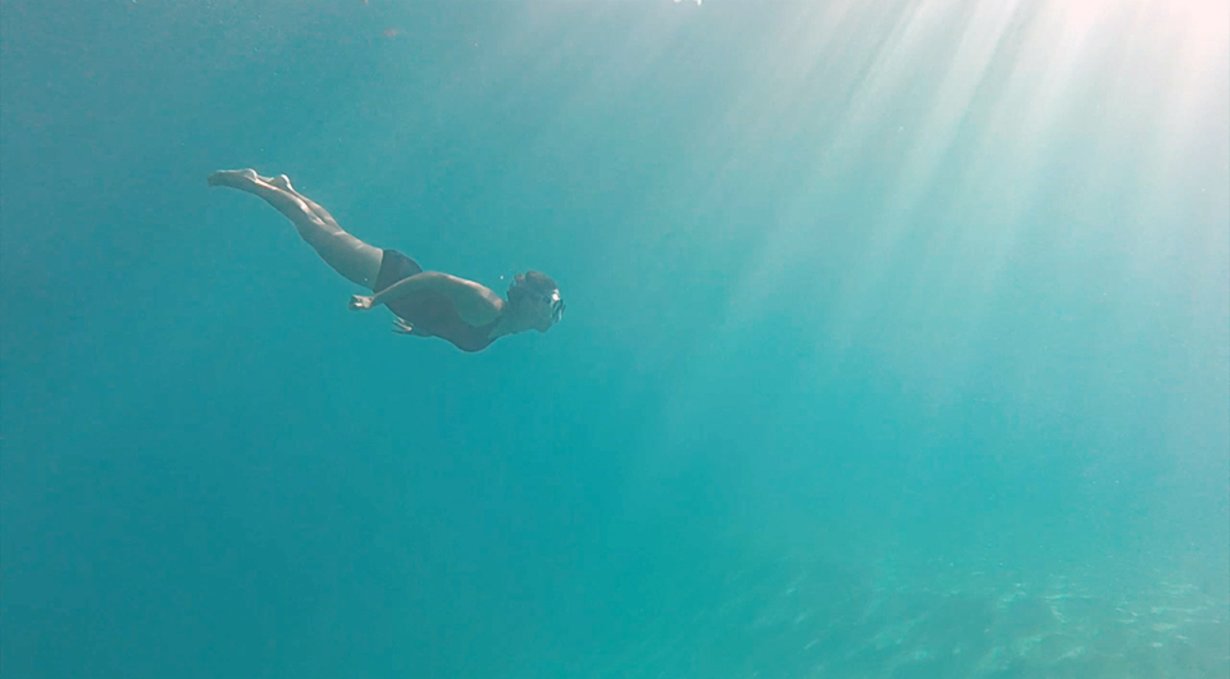
Devine & I were never that comfortable swimming around the boat before. We did fine in pools, but otherwise diving into a big space full of living creatures was a frightening experience. Bit by bit, I swam further, and Devine deeper. We became creatures of the ocean.
Fish aren't as frightful as land creatures, its crazy how close you can get without them making any effort to avoid you. Walking into a forest, you're lucky if you can spot anything at all, but in the water very few hide, most will swim close or near you.
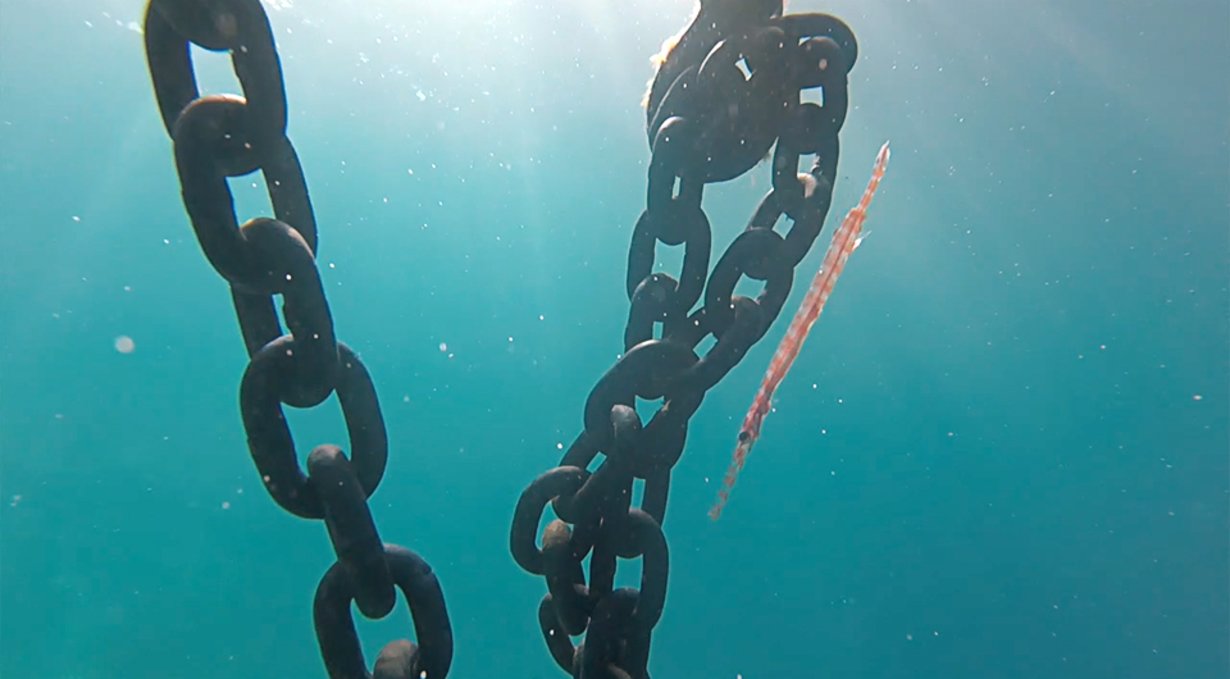
We took Iggy out to the outer reef once in a while. There wasn't much on the sea floor, just small blocks of coral, and a lot of darkly-tinted sea cucumbers. An infinity of leathery sea pickles, a horrid mine field of sunken turds—not very appealing. When you think of the South Pacific, this isn't the image that comes to mind.
Going ashore didn't offer much in terms of sight-seeing, aside from the resort, there was not much else around. A 30 min walk away, was a tiny shop that sold canned goods, mostly canned fish and corned beef. They had some dry snacks, a limited set of toiletries and no fresh foods, aside from some onions. Some days they said they had potatoes and greens, but we never saw any on the shelves. The road-side to the shop was full of coconut trees, the shells lining the road.
The small shops never had much, that is, unless we walked in with the goal of buying an endless supply of corned beef. If we wanted to get more fresh foods, we'd have to take the boat back up to Fare in the north of the island. We took Pino back there once, only to re-supply, and hurried right back down to Baie d'Avea. It's so much nicer there, there's always room to anchor and it's calm, so, so, calm.
Fare is one of the nicer French Polynesian villages we've visited, the U supermarket has a good supply of everything. Although, it's important to always check inside packaging when buying dried goods. One day, Devine bought a bag of rice kept in a thick paper bag, when we opened it that same day we saw it had an entire ecosystem living in it, an advanced civilization of moths. The same happened when buying dried pasta in plastic bags, sometimes we'd find things living in it. A warm environment makes it really easy for insect eggs to hatch, it is virtually impossible to completely remove all traces of insects from raw agricultural grain foods, which is how the weevils (or their eggs) got there in the first place.
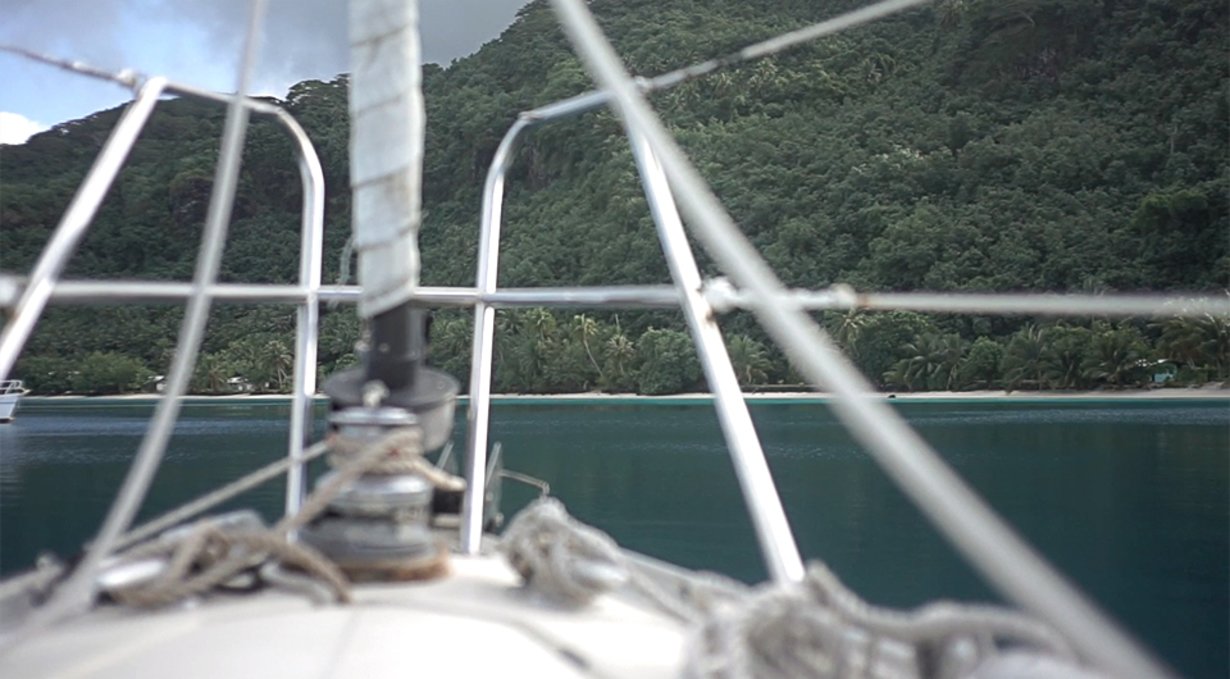
The idea is to either eat it all before the eggs hatch, or to freeze, deprive them of oxygen long enough, or heat the grains prior to storing them to kill the eggs. Being lazy, and lacking a fridge or oxygen absorbers, we don't do these things, we just pick our packaging carefully, avoiding paper and cardboard and opting for thick plastic whenever possible. If the bugs are already in the grain, there is little that can be done. While we would prefer to avoid plastic, in the tropics not having plastic means your food will likely be infested with bugs. We had this happen many times: opening a box of couscous, only to find a moth flying out of it, or cutting open a bulb of garlic, again, to find hatchlings hiding in there. We've had our share of insect troubles. I spent many evenings sifting creepy-crawlies out of rice, or flour, with a bowl and strainer. In a place where food is costly, and scarce, we let go of our disdain of such things. If only our past selves could see us now.
In such situations, we've got to weigh the good against the bad, insects in food sucks, because I like food and prefer it bug-free, but being able to swim with angel fish, trumpet fish and octopus is very, very good.
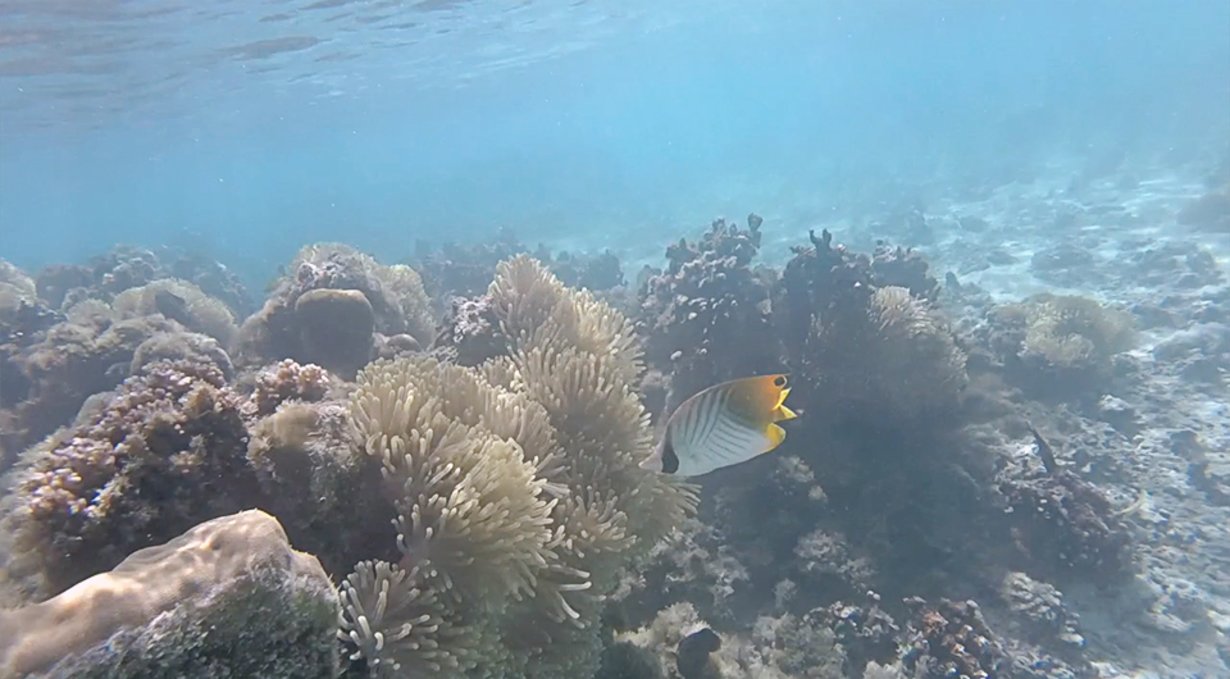
This is where we spent our last month in French polynesia, admiring with child-like fascination every living thing around us, every bird and fish, etched into our minds.
Yes, yes, even the disgusting sea cucumbers.
Watch a video of our time in Huahine.